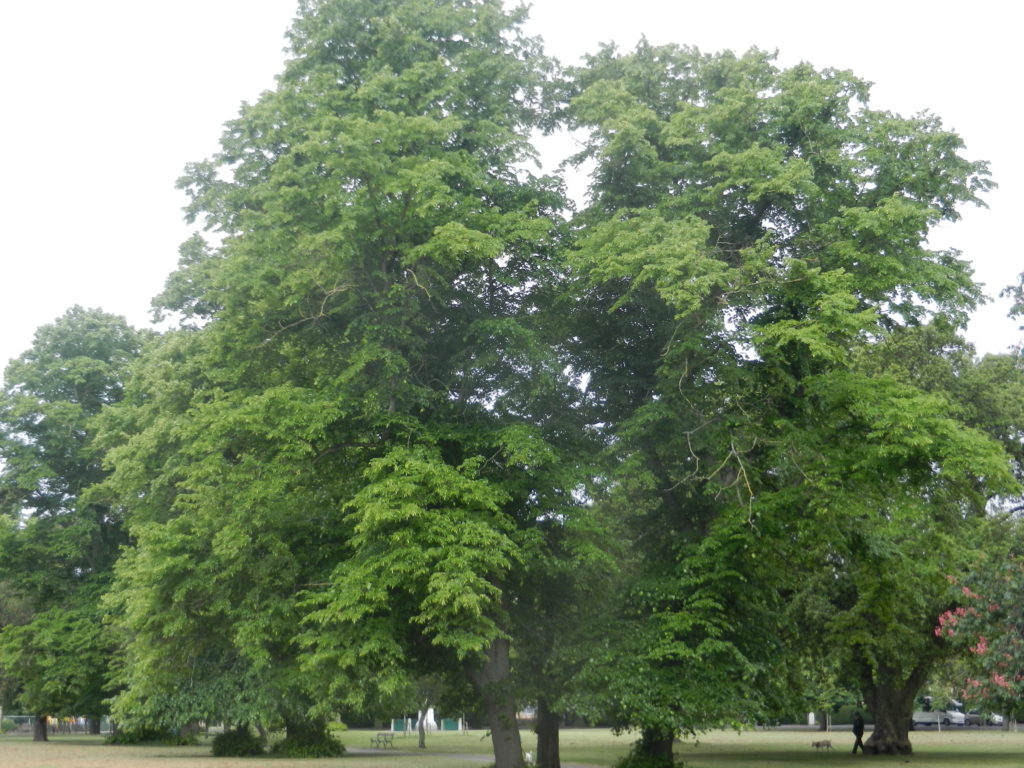
The photo above shows one of the groups of three trees planted close together in Pearson Park, Hull and mentioned in a post two posts back. As with most of the groups of three these are lime trees, in fact there is another group of three left of centre in the picture, again lime trees. Right edge can be seen a couple of branches of an ornamental horse-chestnut still in flower; officially these are known as ‘red chestnuts’.
Lots of Utube videos suggest ways of estimating the height of trees, indeed the height of any visible object including church towers. My preferred way, because it involves no equipment and can be done by one person, is the ‘stick method’. All that is needed is a relatively straight stick at least as long as your arm. It so happens that my walking stick, which I don’t have to use but which I find useful, is about right. If the stick is a bit longer than your arm then hold the stick at the point of arm’s length when estimating. Holding the stick vertical walk backwards or forwards until the bottom of your held stick is in line with the base of the trunk and the top in line with the top of the tree. Then from this point pace out the distance to the base of the tree trunk (long pace = a yard). In the case of the tallest of the three trees above the paced distance was 27 yards, 81 feet; then add to this the height of your stick above ground when measuring, 5 feet in my case, therefore tree’s hight is estimated at 86 feet – a very high lime tree.
As a comparison giant sequoia (redwoods) can grow to over 300 feet high (although not usually in England) while the spire of South Dalton church is just over 200 feet in height and the west towers of York Minster are just under. I do not know the height of the west towers of Beverley Minster but the crossing tower of Hull Minster is about 150 feet high.
The average height of most mature tree species in England will be between 50 and 70 feet. Limes are lofty trees.